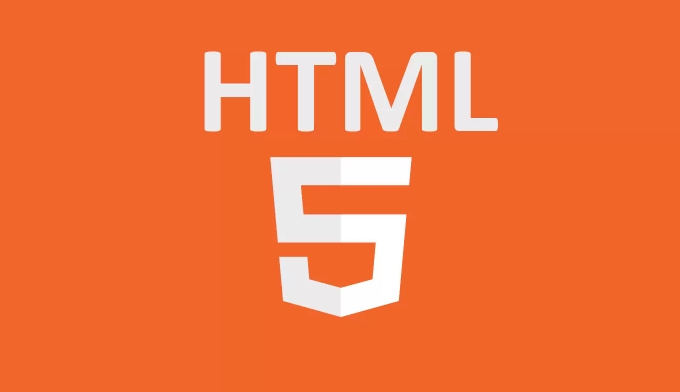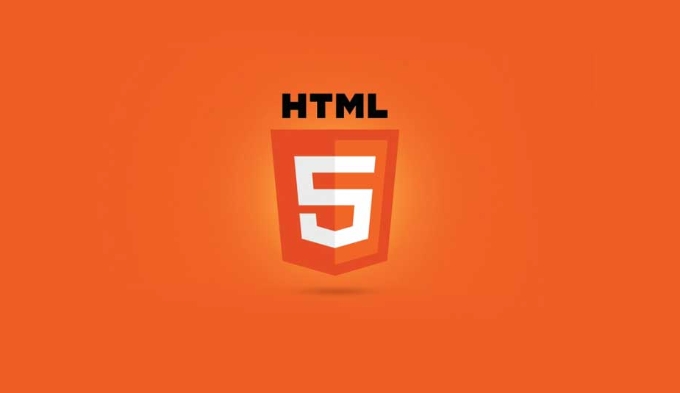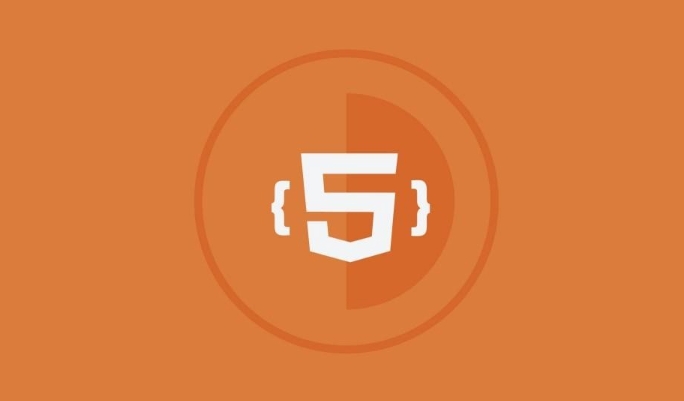Implementing Responsive Images using HTML Picture Element
Jul 10, 2025 pm 01:07 PMThe <picture> element is a native way to implement responsive pictures in HTML5. It allows the most appropriate image resources to be loaded according to factors such as the screen size, resolution, and orientation of the device. Define multiple image sources and their corresponding media query conditions through the <source> tag. The browser will match and load the pictures that meet the conditions in order, and finally use the  tag as the default fallback. For example: when the device width is greater than or equal to 1024px, medium.jpg is loaded between 768 and 1023px, small.jpg is loaded if the device width is greater than or equal to 1024px. Compared with
tag as the default fallback. For example: when the device width is greater than or equal to 1024px, medium.jpg is loaded between 768 and 1023px, small.jpg is loaded if the device width is greater than or equal to 1024px. Compared with  's srcset, <picture> provides more refined control capabilities, such as adapting to Retina screens, horizontal and vertical screen switching, completely different picture content, etc. When using it, media query conditions should be set reasonably, combined with srcset to improve high-resolution experience, and pay attention to image performance optimization. Typical applicable scenarios include: switching pictures with different compositions, using WebP format and falling back to JPG/PNG, adjusting aspect ratio to adapt to screen direction changes, etc.
's srcset, <picture> provides more refined control capabilities, such as adapting to Retina screens, horizontal and vertical screen switching, completely different picture content, etc. When using it, media query conditions should be set reasonably, combined with srcset to improve high-resolution experience, and pay attention to image performance optimization. Typical applicable scenarios include: switching pictures with different compositions, using WebP format and falling back to JPG/PNG, adjusting aspect ratio to adapt to screen direction changes, etc.

Responsive pictures do not simply make the pictures scale, but load the most suitable picture resources based on factors such as the screen size, resolution, etc. The <picture></picture> element is a native way provided by HTML, which allows us to more precisely control which picture should be displayed under different conditions.

What is a <picture></picture> element?
<picture></picture> is a tag introduced by HTML5 to provide multiple image sources for different device conditions. It's a bit like " @media query for images", which allows you to define multiple <source></source> tags, each with media queries or other conditions, based on which the browser will select the most suitable image to load.
The basic structure is as follows:

<picture> <source srcset="large.jpg" media="(min-width: 1024px)"> <source srcset="medium.jpg" media="(min-width: 768px)"> <img src="/static/imghw/default1.png" data-src="small.jpg" class="lazy" alt="Implementing Responsive Images using HTML Picture Element"> </picture>
If the device width is greater than or equal to 1024px, large.jpg is loaded; medium.jpg is loaded between 768 and 1023px; small.jpg is used if it is less than 768px.
Why use <picture> instead of just <img src="/static/imghw/default1.png" data-src="https://img.php.cn/upload/article/000/000/000/175212402729657.jpeg" class="lazy" alt="Implementing Responsive Images using HTML Picture Element" > 's srcset ?
Although the <img src="/static/imghw/default1.png" data-src="https://img.php.cn/upload/article/000/000/000/175212402729657.jpeg" class="lazy" alt="Implementing Responsive Images using HTML Picture Element" > tag also supports srcset and sizes attributes for responsive images, its control granularity is limited. For example:

- You cannot specify different pictures based on the pixel ratio of different devices (such as Retina screen);
- The picture cannot be switched according to the device direction (horizontal/vertical screen);
- It is also impossible to replace completely different image content (such as simplified version pictures displayed on mobile).
And <picture> can easily deal with these scenarios. For example: You want to show a photo of vertical composition on your mobile phone and horizontal composition on your desktop. In this case, <picture> is very suitable.
How to correctly implement responsive pictures using <picture> ?
Here are some key points and suggestions:
Always include a
<img src="/static/imghw/default1.png" data-src="hero-mobile.jpg" class="lazy" alt="Implementing Responsive Images using HTML Picture Element" >fallback : no matter how many<source>there are, there must be a<img src="/static/imghw/default1.png" data-src="hero-mobile.jpg" class="lazy" alt="Implementing Responsive Images using HTML Picture Element" >tag as a guarantee, otherwise some browsers that do not support<picture>will not see the picture.Set
mediaconditions reasonably : Ensure that there are no conflicts or missing intervals for each<source>media query. for example:- The first
<source>is(min-width: 1024px) - The second one can be
(min-width: 768px)instead of(min-width: 768px) and (max-width: 1023px)because the bigger case has been ruled out before.
- The first
Use high-resolution images with
srcset: You can usesrcsetin each<source>to specify 1x and 2x images to improve the Retina screen experience, for example:<source srcset="photo-large.jpg, photo-large-2x.jpg 2x" media="(min-width: 1024px)" >
Note the file size and performance : even if you provide multiple images, optimize their size. Large images should only be loaded when they are really needed to avoid slowing down the page.
When is <picture> suitable?
Not all responsive images require <picture> . Here are a few typical usage scenarios:
- You need to switch completely different image content according to the screen size (such as mobile version showing product close-up vs. desktop version of scene image)
- Want to provide higher-definition pictures for high-resolution screens
- Use new formats such as WebP, while retaining JPEG/PNG fallback
- Change the aspect ratio of the picture to adapt to different screen directions
For example:
<picture> <source srcset="hero-wide.webp" type="image/webp"> <source srcset="hero-wide.jpg"> <img src="/static/imghw/default1.png" data-src="hero-mobile.jpg" class="lazy" alt="Home Banner"> </picture>
This will give priority to loading desktop wide images in WebP format. If not supported, fall back to JPG. If not, the mobile version of the small images will be displayed.
Overall, <picture></picture> brings us a more flexible responsive image solution. As long as you organize the <source></source> conditions reasonably and use them with srcset and type , you can achieve both beautiful and efficient image loading strategies. Basically all this is it. Although there is not much code, it is easy to cause problems if the details are not done well.
The above is the detailed content of Implementing Responsive Images using HTML Picture Element. For more information, please follow other related articles on the PHP Chinese website!

Hot AI Tools

Undress AI Tool
Undress images for free

Undresser.AI Undress
AI-powered app for creating realistic nude photos

AI Clothes Remover
Online AI tool for removing clothes from photos.

Clothoff.io
AI clothes remover

Video Face Swap
Swap faces in any video effortlessly with our completely free AI face swap tool!

Hot Article

Hot Tools

Notepad++7.3.1
Easy-to-use and free code editor

SublimeText3 Chinese version
Chinese version, very easy to use

Zend Studio 13.0.1
Powerful PHP integrated development environment

Dreamweaver CS6
Visual web development tools

SublimeText3 Mac version
God-level code editing software (SublimeText3)

Hot Topics
 CSS Positions layout method to implement responsive image layout
Sep 26, 2023 pm 01:37 PM
CSS Positions layout method to implement responsive image layout
Sep 26, 2023 pm 01:37 PM
CSSPositions layout method to implement responsive image layout In modern web development, responsive design has become an essential skill. In responsive design, image layout is one of the important considerations. This article will introduce how to use CSSPositions layout to implement responsive image layout and provide specific code examples. CSSPositions is a layout method of CSS that allows us to position elements arbitrarily in the web page as needed. In responsive image layout,
 How to implement responsive image and multimedia management under Vue?
Jun 27, 2023 am 08:06 AM
How to implement responsive image and multimedia management under Vue?
Jun 27, 2023 am 08:06 AM
With the development of the Internet, images and multimedia resources have become an important part of websites and applications. How to implement responsive image and multimedia management in a Vue project? This article will introduce some methods and techniques. Using Components Components in Vue are a very powerful tool for dividing your UI organizational structure into reusable modules. Components can pass data through props and events, which makes components very flexible. When dealing with images and multimedia resources, we can create a component to manage them. this group
 Implementing Responsive Images using HTML Picture Element
Jul 10, 2025 pm 01:07 PM
Implementing Responsive Images using HTML Picture Element
Jul 10, 2025 pm 01:07 PM
Elements are a native way to implement responsive images in HTML5. It allows the most appropriate image resources to be loaded according to factors such as the screen size, resolution, and direction of the device. Define multiple image sources and their corresponding media query conditions through tags. The browser will match and load pictures that meet the conditions in order, and finally use the tag as the default fallback. For example: when the device width is greater than or equal to 1024px, medium.jpg is loaded between 768 and 1023px, small.jpg is loaded if the device width is greater than or equal to 1024px. Compared with srcset, it provides more refined control capabilities, such as adapting to Retina screens, horizontal and vertical screen switching, completely different picture content, etc. Media checks should be set reasonably when using
 How does the srcset attribute help with responsive images in html?
Jul 07, 2025 am 12:26 AM
How does the srcset attribute help with responsive images in html?
Jul 07, 2025 am 12:26 AM
srcset is an attribute of tags in HTML that defines multiple image sources, allowing the browser to select the most appropriate image based on the device's screen size and resolution. 1. It improves page loading speed and user experience, avoiding unnecessary large image downloads or blurred displays. 2. Use the w descriptor to specify the image width. Combined with the sizes attribute, the browser can select the best image according to the layout width. 3. A pixel density descriptor such as 2x can be used to provide a clearer image for high-resolution screens. 4. When using it, src should be included as a fallback, and ensure that the image size is accurate and optimized well. Cross-device testing should be carried out to ensure the effect.
 Implementing Responsive Images with the HTML srcset and sizes Attributes
Jul 12, 2025 am 12:15 AM
Implementing Responsive Images with the HTML srcset and sizes Attributes
Jul 12, 2025 am 12:15 AM
srcset and sizes are key properties for HTML implementation of responsive images. srcset provides multiple image sources and their width or pixel density, such as 400w and 800w, and the browser selects the appropriate image accordingly; sizes defines the display width of the image under different screen widths, such as (max-width: 600px)100vw, 50vw, so that the browser can more accurately match the image size. In actual use, you need to prepare multi-size pictures, clearly named, design layout in accordance with media query, and test the performance of the equipment to avoid ignoring sizes or unit errors, thereby saving bandwidth and improving performance.
 How to use srcset for responsive images?
Jul 12, 2025 am 12:50 AM
How to use srcset for responsive images?
Jul 12, 2025 am 12:50 AM
The key to implementing responsive images in srcset is to understand the syntax and browser selection mechanism. 1. Basic structure: Provide multiple image versions through srcset, and use w descriptors to indicate the width, such as 320w and 480w; 2. Use sizes attribute to define the display size of the image under different screen widths, such as 100vw and 50vw; 3. Use x descriptors to provide high-definition images for high-resolution screens, such as 1x and 2x; 4. The actual suggestions include manually or tools to generate multi-size images, avoiding too many options affecting performance, and setting the alt attribute to ensure accessibility.
 How to create responsive images using CSS?
Jul 15, 2025 am 01:10 AM
How to create responsive images using CSS?
Jul 15, 2025 am 01:10 AM
To create responsive images using CSS, it can be mainly achieved through the following methods: 1. Use max-width:100% and height:auto to allow the image to adapt to the container width while maintaining the proportion; 2. Use HTML's srcset and sizes attributes to intelligently load the image sources adapted to different screens; 3. Use object-fit and object-position to control image cropping and focus display. Together, these methods ensure that the images are presented clearly and beautifully on different devices.
 How do I make responsive images with HTML tags?
Jun 27, 2025 am 12:30 AM
How do I make responsive images with HTML tags?
Jun 27, 2025 am 12:30 AM
TomakeresponsiveimagesusingHTML,combineproperHTMLattributeswithbasicCSS.Startbyusingthetagwithsrc,alt,andwidthtoensureaccessibilityandpreventlayoutshifts.Avoidsettingbothwidthandheightunlesstheymatchtheimage'saspectratio.Next,addsrcsetandsizesattribu






